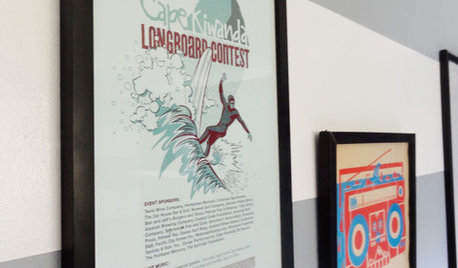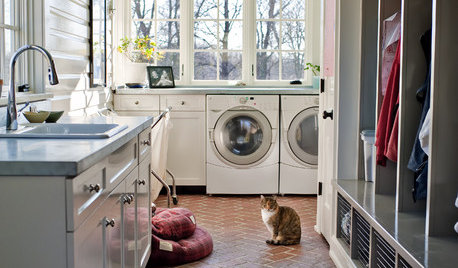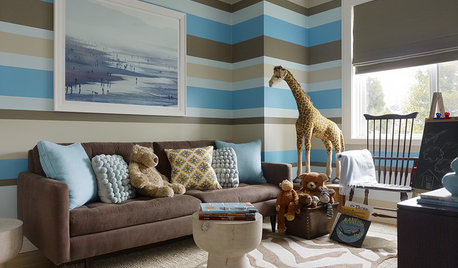Another question on my stripe painting
aok27502
14 years ago
Related Stories

DECORATING GUIDESHow to Paint Perfect Wall Stripes
Draw the line on lackluster walls with crisply painted stripes. Here's the secret to getting them right
Full Story
DECORATING PROJECTSDIY: How to Paint Stripes on Your Floor
Paint brings a dreary porch floor to life in New England — watch the process unfold and get tips and ideas for your own floors
Full Story
KITCHEN DESIGN9 Questions to Ask When Planning a Kitchen Pantry
Avoid blunders and get the storage space and layout you need by asking these questions before you begin
Full Story
FEEL-GOOD HOMEThe Question That Can Make You Love Your Home More
Change your relationship with your house for the better by focusing on the answer to something designers often ask
Full Story
DOORS5 Questions to Ask Before Installing a Barn Door
Find out whether that barn door you love is the right solution for your space
Full Story
HOUSEKEEPINGAnother Independence Day: When Kids Can Do Their Laundry
Set yourself free and give your child a valuable life skill at the same time
Full Story
DECORATING GUIDESWhat Goes With a Striped Sofa?
Do all those lines have your head spinning in circles? These decorating ideas will straighten you right out
Full Story
DECORATING GUIDESExpert Talk: 14 Designers Show Their Stripes
Painted stripes can create huge impact in a room for little cost. See how and why these professionals gave 14 rooms their stripes
Full Story
REMODELING GUIDES9 Hard Questions to Ask When Shopping for Stone
Learn all about stone sizes, cracks, color issues and more so problems don't chip away at your design happiness later
Full Story
EXTERIORSCurb Appeal Feeling a Little Off? Some Questions to Consider
Color, scale, proportion, trim ... 14 things to think about if your exterior is bugging you
Full StoryMore Discussions








decorativewalls
Related Professionals
Plymouth Painters · Boca Raton Painters · Burlington Painters · Fillmore Painters · Livermore Painters · North Aurora Painters · Yonkers Painters · Avocado Heights Cabinets & Cabinetry · Buena Park Cabinets & Cabinetry · Radnor Cabinets & Cabinetry · Jenison Flooring Contractors · Saint Paul Flooring Contractors · Smyrna Flooring Contractors · Troy Flooring Contractors · Fullerton Flooring Contractors